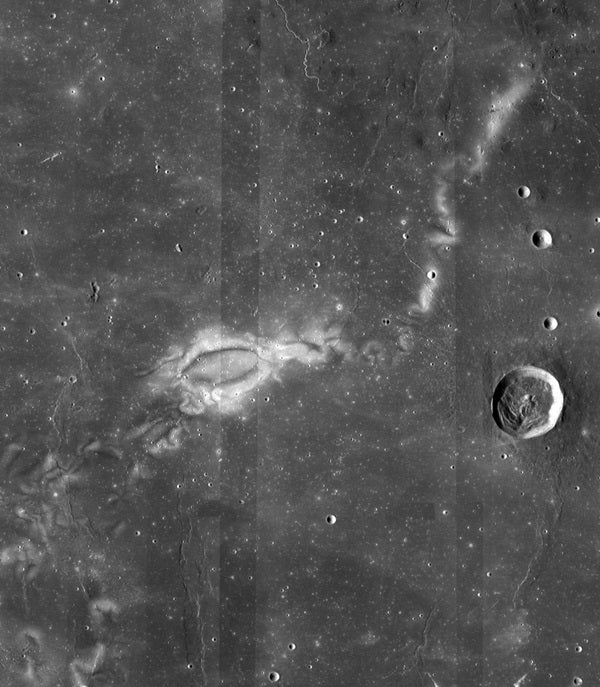Twisted identity
Reiner Gamma first appears as a shallow crater on the Dutch astronomer Michael Florent Van Langren’s 1645 map of the Moon. Van Langren labeled it Bullialdi in honor of French astronomer and mathematician Ismaël Bullialdus. Italian Jesuit astronomer Giovanni Riccioli renamed it Galilaeus on his 1651 Moon map, which he based on observations made by his pupil Francesco Grimaldi, who rendered it as a well-defined crater. When German astronomer Johann Heinrich von Mädler observed the feature in the 1820s, he was not convinced it was a crater.
Mädler believed that only prominent craters were worthy of names, so he invented a new system for labeling lunar features: Craters got names; small satellite craters received Roman letters (for instance, Reiner A); and other formations, such as rilles and mountains, got Greek letters (Reiner Gamma). Because he vetoed Galilaeus as a crater, he moved that label to the nearest one and changed the name to Galilei (it’s still that way today). Mädler then classified the original Galilaeus feature as a ridge and relabeled it Reiner Gamma.
One stretches northeast into Marius Hills (a volcanic complex), while another less noticeable one fans gently to the southwest in a series of bright eddies. Seen together, Reiner Gamma and its attendants look like an albino tadpole heading upstream; formally, it’s known as a lunar swirl.
A magnetic wonderland
The Reiner Gamma swirl is the most prominent of its kind on the Moon and the only one on the nearside. Spacecraft observations from the mid-1960s and later have revealed that such swirls are magnetized. While the Moon doesn’t sport a large, single magnetosphere like Earth, it does have a crazy quilt network of magnetic patches sprouting up from the lunar surface — and Reiner Gamma is one of the strongest.
Actually, according to Ruth Bamford of RAL and the Center for Fundamental Physics, the force that’s deflecting the solar wind particles is electric, not magnetic. The electric field, she says, is created naturally by the edges of the Moon’s magnetic bubbles.
What we see, then, when we look at Reiner Gamma is lunar soil untainted by the effects of the solar wind, which otherwise would darken the lunar soil over time.
Of course, without darkness, it would be hard to appreciate the light. As always, let me know what you see and think at sjomeara31@gmail.com.












